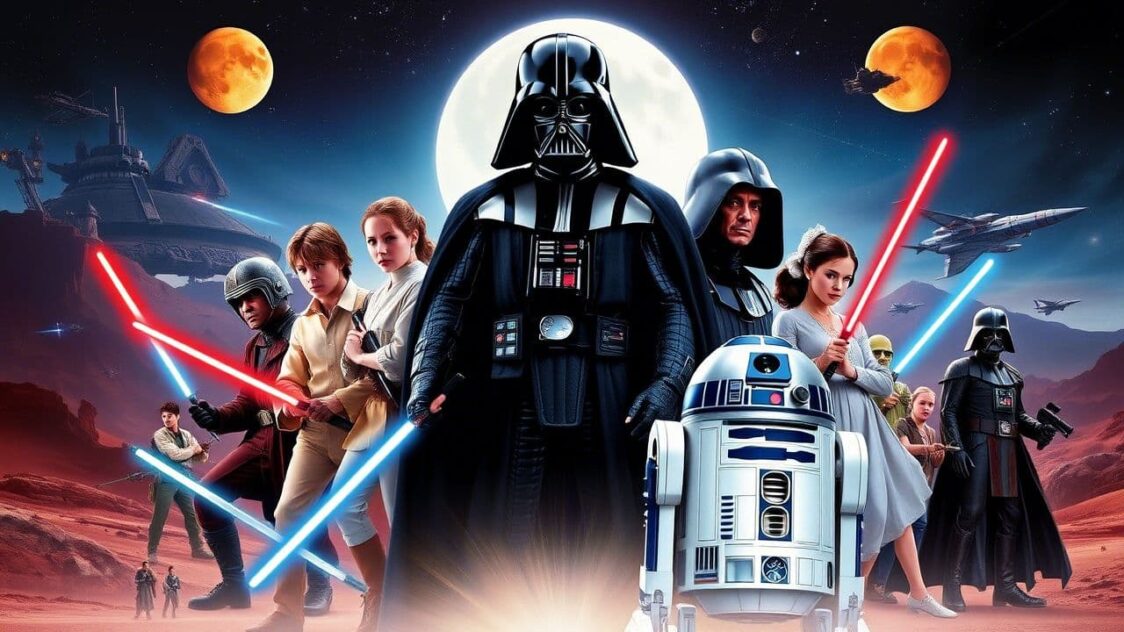
In the ever-evolving landscape of content creation, where trends come and go at the speed of a social scroll, one franchise continues to serve as the gold standard of narrative design: Star Wars. Its story, spanning decades, galaxies, and generations, offers not just entertainment — but a blueprint for powerful storytelling that connects across cultures, mediums, and emotional registers.
From Hollywood producers to classroom educators, brand strategists to novelists, creatives of all kinds return again and again to Star Wars not just because it’s beloved, but because it’s structured for impact. The saga created by George Lucas remains a masterclass in character arcs, mythological storytelling, world-building, and emotional resonance. And while the spaceships and aliens make it unforgettable, it’s the human truths at its core that make it eternal.
The Hero’s Journey, Reinvented — and Relatable
At the very heart of Star Wars lies Joseph Campbell’s concept of the “Hero’s Journey” — a timeless narrative arc that has guided storytellers for centuries. But Star Wars didn’t just copy the formula; it breathed new life into it.
Luke Skywalker’s evolution from a bored farm boy on a remote desert planet to a warrior who resists the dark side is not just space-fantasy spectacle — it’s a spiritual journey. It’s about self-doubt, temptation, courage, failure, legacy. The arc mirrors the emotional struggles we all face, from adolescence to adulthood, from fear to purpose.
And Star Wars keeps evolving the structure. In later trilogies, characters like Rey and Finn reinterpret the journey, adding modern layers of identity, origin, and belonging. These journeys resonate because they’re not just heroic — they’re deeply human, and they mirror the audience’s own search for meaning.Even more impressively, these arcs have inspired new generations of storytellers to embrace mythological structure not as limitation, but as a launching pad for originality and transformation.
Conflict That Connects — On Every Level
Great stories don’t shy away from conflict — they embrace it. In Star Wars, conflict exists on multiple planes simultaneously, creating a layered emotional experience for the audience.
There’s personal conflict:
Anakin Skywalker vs. himself, torn between love and power, fear and control — ultimately consumed by his inner demons.
There’s familial conflict:
Luke vs. Vader, father and son, light and dark, history and future clashing in a battle for redemption.
And then there’s political conflict:
Empire vs. Rebellion, tyranny vs. freedom, control vs. hope.
These tensions are not just setups for action — they are mirrors. They reflect the real struggles of human life: internal battles, generational trauma, societal injustice. This is what makes the franchise so much more than popcorn cinema. The stakes feel real — because they are rooted in emotional truth.
And it’s this emotional grounding that makes the story universal. Regardless of age, culture, or background, people see themselves in these conflicts — not just watching the battle, but feeling it.
Symbols That Stick
Star Wars is a visual feast. But its power lies not just in design — it lies in the symbolism behind the visuals.
The dual suns of Tatooine represent longing.
The lightsaber — a weapon, yes, but also a legacy, a burden, a path.
The black helmet of Darth Vader — iconic not just for its shape, but for the fear, tragedy, and transformation it signifies.
Even the Millennium Falcon, “a piece of junk,” becomes a symbol of resistance, hope, and found family. These aren’t just props — they are emotional triggers. They operate like metaphors, condensing entire themes into instantly recognizable forms. This is the genius of great storytelling: letting visual and auditory cues carry narrative weight, so that stories are not only remembered — they’re felt.
And then there’s the language. “I am your father.” “Do or do not, there is no try.” “May the Force be with you.”. These lines transcend dialogue. They are modern myths, embedded into everyday speech, memes, motivational posters — and most importantly, into memory.
When Storytelling Enters Real Life
Truly great stories don’t just entertain — they inspire action, creativity, and identity. Star Wars fans around the world keep the saga alive not through consumption, but through participation.
From elaborate cosplays and fan fiction to fan-made films and full-scale conventions, the story continues – not because it’s being sold, but because it’s being shared.
And that’s what storytelling is ultimately about: sharing meaning. We see this even in the smallest ways – like parents throwing themed birthdays where children dress up as Rey or Chewbacca, or classrooms using Jedi ethics to teach morality and leadership.
You can even bring the myth to life in your own home. A simple, fun example? Make your own Death Star piñata and turn a party into an act of shared storytelling. These are not just fandom activities — they’re rituals of belonging, where narrative becomes something personal, tactile, and joyful.
Conclusion: The Force of Narrative
The reason Star Wars endures isn’t just because of the special effects, the clever creatures, or even the brilliance of John Williams’ score. It’s because it taps into universal human truths:
Hope. Fear. Identity. Choice.
It shows us that even in the darkest galaxies, there is light. That even the most broken can be redeemed. That we’re all capable of change.
In a world of distractions and short attention spans, Star Wars proves that a well-crafted story cuts through the noise. It transcends genre and medium. It becomes language, ritual, emotional memory.
And that’s the storytelling Force we should all aim to master — not just in film, but in branding, teaching, parenting, design, leadership, and beyond.
Because in the end, the greatest power in the galaxy isn’t the Force itself.
It’s the ability to tell a story that lasts.